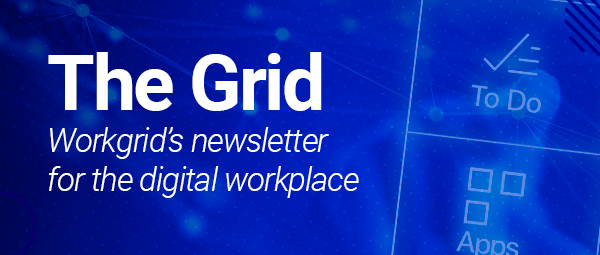Conversational AI is revolutionizing the digital workplace by simplifying communication and enhancing productivity. With intuitive interfaces and natural language processing capabilities, these intelligent virtual assistants can automate tasks and provide employees with instant access to the information they need. In this blog, we will explore the key terms surrounding conversational AI, empowering you to navigate this transformative technology with confidence.
Model Training
Leveraging conversational AI requires data to be ingested, analyzed, and returned effectively. This starts with ensuring that the AI model is trained to understand the information presented to it.
Splitting & Embedding
Splitting and embedding are two crucial methods utilized for data ingestion. Splitting involves dividing the data into distinct sets, while embeddings refer to groups of split text. These two techniques work together to effectively train the conversational model.
For example, when an assistant has the ability to integrate with third-party systems and sources, like a knowledge source, it will divide the data into distinct sets. This division helps break down the data, making it easier to comprehend and provide accurate answers to questions later on.
Query Analysis
One of the key processes involved in conversational AI is query analysis which refers to the process of understanding and interpreting user queries or questions to provide relevant and accurate responses.
When a user interacts with an AI Assistant, they often pose their questions in natural language. Query analysis involves breaking down the user’s query, extracting the most important keywords and entities, and understanding the underlying goal or objective, otherwise known as intent.
![[asset] entity-extraction-example](https://images.ctfassets.net/z7p73u8c0thn/zYJ5weRDeQ4MaRrct6YGb/df5610f7a00b98609d415c8c9bb76cdc/entity-extraction-example.png?w=1200&h=675&q=60&fm=png&bg=transparent)
To understand the intent, conversational AI systems utilize techniques like natural language processing (NLP) and machine learning algorithms which enable the AI Assistant to analyze the structure and meaning of the query and provide a relevant response. Here are a few key terms involved in query analysis:
Query Rewrite
Query rewrite is a process that reformulates a given query by either enhancing or simplifying it and correcting human error in a way that improves the assistants ability to find matches, rule out irrelevant content, and enhance retrieval performance.
Conversation Memory
Conversation memory is used in conversational AI to create a more intelligent experience. It enables the chatbot to respond to queries in the context of the preceding query, facilitating a more natural multipart conversation.
Zero-shot Classification
Zero-shot text classification is a task in natural language processing. In this task, a model is trained on a set of labeled examples. However, it is then able to classify new examples from previously unseen classes. For example, understanding and responding to HR-related queries without prior training on HR-specific terminology. It is important to note that zero-shot classification excludes any examples of the desired task being completed. This sets it apart from single or few-shot classification, which involve a single or a few examples of the selected task.
Pattern Matching
Pattern matching is the process of examining a given sequence of tokens (characters) to identify the elements of a specific pattern. These patterns can be defined based on a specific structure or sequence within a given dataset.
Stemming
Stemming is a processing technique commonly used in information retrieval and natural language processing. Its purpose is to reduce inflected words to their word stem, base, or root form. This technique is particularly helpful in the preprocessing of text and can also be utilized for query expansion. For example, the stem of the words ‘running’, ‘runs’, and ‘runner’ is ‘run’.
Keyword Search
Keyword searching is the process of matching words or phrases that connect a topic to a result. Searches can be broad and include individual words or a phrase. This is also known as search queries. A chatbot that operates based on keyword recognition identifies specific keywords within user inputs and generates a predetermined response based on those keywords.
In addition to understanding the intent, query analysis also involves entity recognition. Entities are specific pieces of information that the user is referring to in their query. For example, in the query "What is the current stock price of Apple?", the entity is "Apple" which refers to the company.
Entity Extraction and Slotting
Entities in a chatbot are utilized to enhance the search intent by picking out, or in some cases, requiring specific values to engage with apps. These entities can encompass various elements such as fields, data, or descriptive text related to time, people, items, numbers, and more. The conversational model can identify these entities in the user query, and then pass them on to the app to respond intelligently. For example, AI can identify and extract specific entities such as employee names, department names, or project codes from employee inputs, and slot them into appropriate fields for streamlined and efficient data management. This can help automate processes like onboarding new employees, updating employee information, or assigning tasks, ultimately saving time and minimizing errors in employee management.
Semantic Similarity
Semantic similarity is a metric that measures the likeness of meaning or semantic content between a set of documents or terms. These metrics are mathematical tools that provide a numerical description of the strength of the semantic relationship between language units, concepts, or instances. This description is obtained by comparing the information that supports their meaning or describes their nature. It's important to note that semantic similarity should not be confused with semantic relatedness. While semantic relatedness encompasses any relation between two terms, semantic similarity specifically includes "is a" relations. For example, "car" is similar to "bus," but it is also related to "road" and "driving."
By analyzing queries and extracting the intent and entities, conversational AI systems can provide personalized and contextually relevant responses to users. This enhances the user experience and enables the AI Assistant to effectively assist employees in their tasks and inquiries.
Response
While query analysis is a critical component of conversational AI, it’s equally as important for an AI Assistant to deliver the result of a query to users in a digestible manner. It would be no use to an employee if they could use a chatbot to ask about an HR policy only to be delivered an answer that they couldn’t understand. Large Language Models (LLM), reranking, and retrieval augmented generation (RAG) play a key role in this process, ensuring that the conversational AI experience is intelligent and effective.
Reranking
Reranking is a technique used in AI search algorithms to reorder search results based on the probability of relevance to the user query. As a consumer, you have likely encountered this many times. For example, when a user searches for "best laptops," the search engine may initially display results based on popularity, but then re-rank the results to show the most relevant laptops based on factors like performance, customer reviews, and price. In a workplace example, an employee might search “company holidays” and the algorithm may include results from the employee handbook, employee calendar, and the time off management system. Using information such as where the employee is located, the algorithm may more highly rank information with regional specific details for that employee.
Advanced RAG
Retrieval Augmented Generation (RAG) is a prompt engineering technique used to respond to a query by using the most relevant search result content and generating a cohesive response from one or more sources. When an employee uses a chatbot to ask about a particular company policy, the chatbot will search through relevant policy documents and use RAG to generate a summarized response that accurately reflects the current policy. This saves the employee time and effort in manually searching for the information and ensures that they receive accurate and relevant answers.
LLM
A large language model (LLM) is a powerful language model known for its remarkable capability to comprehend and generate language in a general sense. LLMs achieve this by leveraging extensive data to learn billions of parameters during training, as well as utilizing substantial computational resources throughout their training and operation. The functioning of large language models involves taking an input text and iteratively predicting the subsequent token or word.
Together, these tools gather data, interpret it, and determine its value to the employee to deliver the appropriate response. Take the HR policy question from earlier. If an employee asks, “what is my time off balance?”, this could generate several results, from system-based responses to company documents. Perhaps they are looking for the exact hours, or perhaps they are interested in a policy explaining how hours are accrued. Using the technology above, an AI Assistant can rank these possible results and summarize the response appropriately, giving precedent to the system-based response to deliver exact remaining hours or summarizing one sentence about accruals from a lengthy document.
![[asset] What-is-my-time-off-balance](https://images.ctfassets.net/z7p73u8c0thn/2ozVMoxa9C3cFYWoHtIP7a/516508d46f122f0820f1ac85622d1924/What-is-my-time-off-balance.png?w=735&h=695&q=60&fm=png&bg=transparent)
Conclusion
When it comes to conversational AI there are many complexities and an ever-evolving list of technologies that help power this incredible tool. However, it’s clear that the future of the employee experience will be forever transformed by its capabilities.
Ready to see how an AI Assistant can help your digital workplace? Schedule a demo today.




